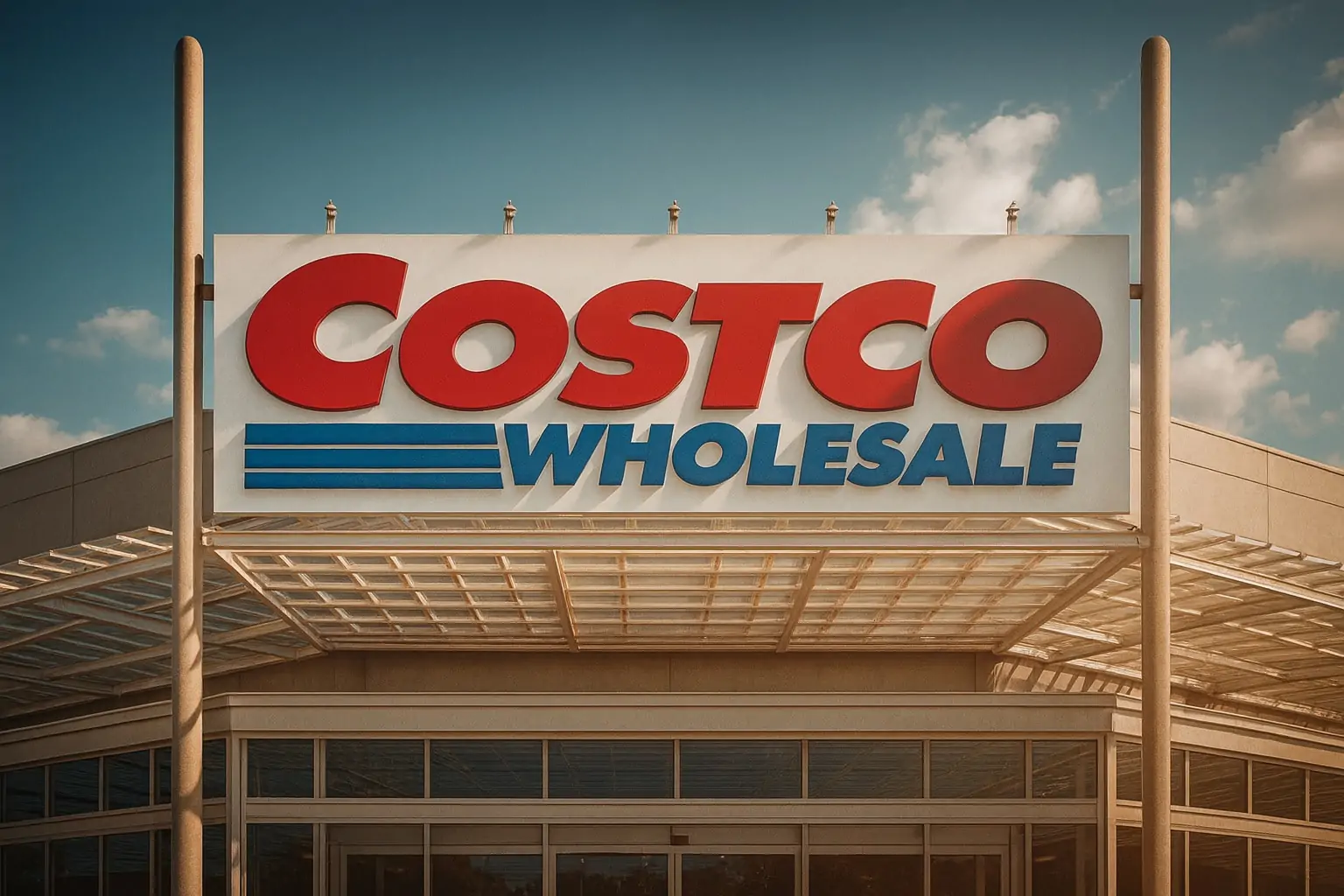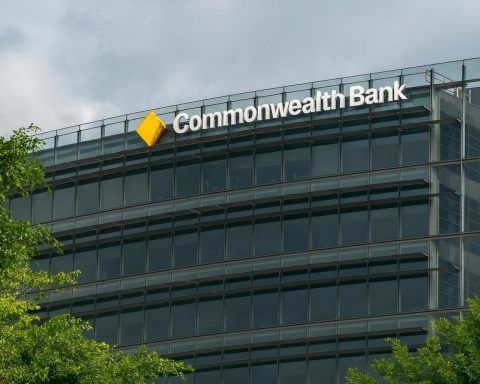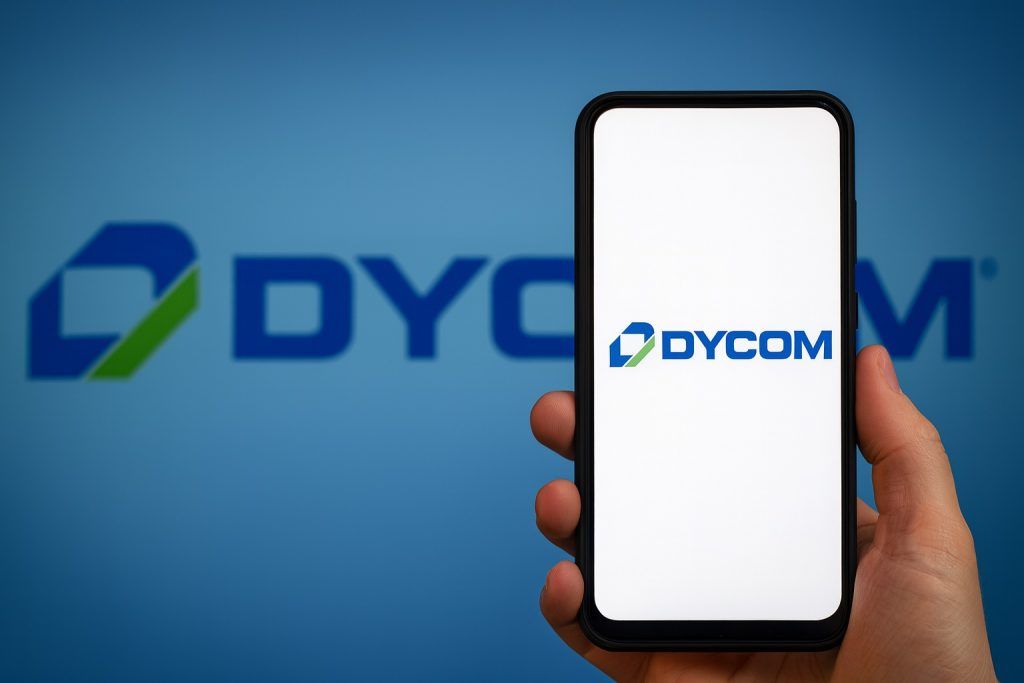On Wednesday, November 19, 2025, Costco shares were hovering around the high‑$880s to low‑$890s, down roughly 15% from their 52‑week high above $1,078 and sitting just above a new 52‑week low near $872. At that price, Costco still trades at around 49–51 times trailing earnings, with a market cap close to $397 billion and a PEG ratio around 5 — far richer than both the retail sector and the broader S&P 500. [1]
That combination — a rare pullback in an elite business that still looks expensive — has split Wall Street and Main Street commentators:
- The Motley Fool is asking whether this is not the time to buy, arguing that even after the drop, valuation leaves little “margin of safety.” [2]
- Seeking Alpha contributors warn Costco’s PEG ratio remains “extreme,” suggesting further downside is possible if the market keeps repricing high‑multiple growth stocks. [3]
- Jim Cramer says the stock has been a “disappointment” lately but calls Costco one of his favorite names and vows he’d never sell it from his charitable trust. [4]
- DailyForex sees today’s dip as a tactical buying opportunity, laying out a bullish trading plan around key support levels. [5]
- Benzinga reports options “whales” leaning clearly bearish, with big money loading up on puts. [6]
At the same time, institutional investors and even a sitting U.S. senator are disclosing fresh Costco purchases, while other funds trim positions — a textbook example of mixed sentiment. [7]
Here’s how all the November 19, 2025 Costco stock news fits together — and what it might mean if you’re wondering whether to “buy the dip” on COST.
Costco stock today: how big is the dip?
According to recent MarketBeat and exchange data, Costco opened Wednesday around $895.08 per share. The stock’s 52‑week range now runs from about $871.71 on the low end to $1,078.23 at the high. [8]
Fundamentally, this is still the same juggernaut:
- Fiscal Q4 2025 (quarter ended Aug. 31)
- Revenue: $86.16 billion, up 8.1% year over year
- EPS: $5.87, up roughly 14% and slightly ahead of analyst estimates
- Net profit margin: about 3%
- Return on equity: roughly 30% [9]
Over the last five years, Costco shares are still up more than 150%, even after the recent slide. [10]
But valuation has not come down nearly as far as the share price:
- Trailing P/E: around 49–51x [11]
- PEG ratio:
In other words, you’re paying a “premium on a premium”: the stock is well below its peak, but still priced as a best‑of‑breed compounder.
The Motley Fool: great business, but “I wouldn’t rush to buy”
In a new article published November 19, David Jagielski at The Motley Fool asks straight out: “Should You Buy the Dip on Costco Wholesale Stock?” — and his answer is basically “not yet.” [14]
Key points from his analysis:
- Growth remains resilient
Costco’s revenue growth has slowed to single digits but has stayed solidly positive even as many retailers struggle with inflation‑weary consumers. [15] - Membership model is still a machine
The article highlights Costco’s powerful membership‑fee engine and the “treasure‑hunt” nature of its warehouses — you go in for toilet paper and walk out with a kayak and a 4‑pack of waffle makers. That mix keeps traffic and basket size high. [16] - But valuation was bound to crack
Jagielski notes that even after an 11% slide over the past six months and a roughly 15% drop from the 52‑week high, Costco still trades at more than 50x earnings, versus a five‑year average near 45x, and well above what many companies with mid‑single‑digit growth command. [17]
His conclusion: Costco the business is stellar, but Costco the stock still looks too expensive. He suggests the pullback may continue and argues that investors might find better risk‑reward profiles in other growth names right now — putting Costco on a watchlist rather than backing up the truck today. [18]
Valuation hawks: Costco’s PEG ratio is still “extreme”
If The Motley Fool is cautious, some valuation‑focused analysts are downright skeptical.
A recent Seeking Alpha piece titled “Costco: Further Downside As PEG Ratio Remains Extreme” argues that even after dropping about 15% from its February highs, Costco’s valuation still bakes in very aggressive growth expectations. [19]
Supporting data from several providers shows why they’re nervous:
- MarketBeat lists Costco’s PEG at about 5.54, with a P/B above 13 — levels it notes are typically associated with overvaluation. [20]
- Finbox pegs Costco’s latest‑twelve‑month PEG around 5.0, above its own already‑lofty 5‑year average. [21]
- GuruFocus and Yahoo Finance show PEG ratios in the 3.8–5.0 range depending on the growth metric — still multiple times higher than the market norm and most defensive retailers. [22]
The bear case here isn’t about Costco suddenly becoming a bad business. It’s about multiple compression: if earnings keep growing but investors decide they’re no longer willing to pay 45–50x for a big‑box retailer, the share price can stagnate or fall even while the company performs well.
Jim Cramer & the long‑term bulls: “I’d never sell Costco”
Not everyone is worried.
Earlier this week, Jim Cramer reiterated his long‑running bullish stance on Costco. In a piece summarized by Insider Monkey and Finviz, he called Costco one of his favorite companies and noted that it’s likely the longest‑held position in his charitable trust, despite a roughly 6.7% decline over the past month. [23]
Cramer points to:
- Strong October sales — about $21.75 billion, up 8.6% year over year, reinforcing the idea that Costco’s value proposition is resonating even in a shaky consumer environment. [24]
- Costco’s ability to keep prices low while maintaining scale, particularly powerful during long stretches of elevated inflation. [25]
His view: the recent underperformance is frustrating, but it doesn’t change the long‑term thesis. For investors who think in decades rather than quarters, he sees the pullback as part of a normal cycle in a great compounder.
Fresh signals today: traders, technicians, and “whales”
1. DailyForex: bullish trading setup near support
Technical and macro analyst Adam Lemon at DailyForex published a fresh piece on November 19 titled “Costco Wholesale Corporation (COST) Stock Signal: Is It Time to Shop?” [26]
His take is openly bullish in the short term:
- Trade idea:
- Go long between $894.17 (lower band of support) and $911.17 (upper band of the zone).
- Take profits between roughly $991.75 and $1,005.84.
- Stop loss between about $854.28 and $871.71. [27]
- Technical backdrop:
- COST is trading inside a horizontal support zone and within a Fibonacci retracement fan.
- Bearish volume has been heavier than bullish volume, but he sees signs that selling pressure is tiring. [28]
On the fundamental side, Lemon highlights:
- October revenue growth of roughly 8.6%, reinforcing the power of the membership model. [29]
- Double‑digit EPS growth and industry‑leading returns on invested capital. [30]
- A P/E around 49x, versus a P/E just under 30x for the S&P 500, which he acknowledges is expensive but still defensible for a dominant retailer with high‑quality earnings. [31]
In his view, valuations are rich but the combination of strong fundamentals, recent pullback, and price sitting on support makes a tactical long trade attractive.
2. Benzinga: options “whales” lean bearish
Benzinga’s options‑flow desk paints a very different picture.
In a November 19 report titled “This Is What Whales Are Betting On Costco Wholesale,” they flag 21 unusual options trades in COST detected by their scanner — a level they call “not normal.” [32]
Highlights:
- Sentiment skew: only about 14% of the big‑money flow was bullish, while roughly 57% was bearish.
- Puts vs. calls:
- 16 puts, totaling about $1.45 million in premium
- Just 5 calls, totaling roughly $156,000 [33]
- Target price zone: the strikes clustered between $850 and $1,000 over the coming months, suggesting that sophisticated traders are positioning for continued volatility and at least the possibility of another leg down. [34]
- At the time of the report, COST traded around $884–$885, down about 1.1% on the day, with RSI indicators hinting that the stock may be entering oversold territory. [35]
Interestingly, even as the options flow leans bearish, Benzinga notes that recent analyst targets still average around $1,068.75, with firms like Telsey, Oppenheimer and JPMorgan keeping Outperform/Overweight ratings and price targets mostly between $1,025 and $1,100. [36]
3. Institutions, hedge funds and… a U.S. senator
MarketBeat’s flurry of 13F and political‑trading alerts on November 19 shows that big money isn’t moving in one direction:
- Wealthspire Advisors
- Increased its Costco stake by about 2%, to 15,799 shares worth roughly $15.64 million.
- MarketBeat notes that, across the shareholder base, institutional investors and hedge funds now own about 68.5% of Costco stock. [37]
- Dorsey Wright & Associates
- Initiated a new position of 4,338 shares, valued around $4.29 million.
- The same report reiterates that Wall Street’s consensus rating on Costco is “Moderate Buy,” with an average price target near $1,025 based on 19 Buy and 12 Hold ratings. [38]
- TD Waterhouse Canada
- Trimmed its Costco stake by 4.6% in Q2, selling 8,280 shares but still holding about 170,786 shares worth roughly $168 million. [39]
- Senator John Boozman (R‑Arkansas)
- Disclosed a small personal purchase of Costco stock (between $1,001 and $15,000) in an October trade, reported in mid‑November. While tiny relative to Costco’s size, it underscores how widely followed the stock has become. [40]
Across these filings, MarketBeat repeats the same key stats: Costco’s P/E near 49x, PEG around 5.54, dividend of $1.30 per quarter (about a 0.6% yield), and a balance sheet with modest leverage (debt‑to‑equity around 0.20) and healthy liquidity. [41]
Taken together, the institutional tape says: some trimming, some buying, but no mass exodus.
Costco’s fundamentals: still a powerhouse warehouse
Stepping back from the daily noise, Costco’s operating story remains one of the strongest in global retail:
- Roughly 910 warehouses worldwide and over 130 million members, according to recent coverage. [42]
- Membership renewal rates north of 90% in many markets, helped by its value‑heavy private label, Kirkland Signature. [43]
- Q4 2025 earnings that beat expectations on both revenue and EPS. [44]
- Consistent low‑single‑digit to mid‑single‑digit comparable‑sales growth, layered on top of membership fee growth. [45]
Even critics usually agree on one thing: Costco’s business model works. The debate is almost entirely about how much investors should be willing to pay for that reliability.
So… should you buy the Costco dip?
No article can tell you what to do with your money — that depends on your time horizon, risk tolerance, and portfolio. But the current Costco setup can be framed as a trade‑off:
Reasons some investors are buying (or holding) here
- Best‑in‑class business at a rare discount
- Costco almost never looks “cheap” on traditional multiples. A 15% pullback from the highs may be as close to a sale as long‑term bulls can reasonably expect. [46]
- Fundamentals trending in the right direction
- High‑single‑digit revenue growth and double‑digit EPS growth, with strong returns on capital and a fortress‑like membership model, are intact. [47]
- Supportive technical and sentiment signals (for traders)
- Analyst and institutional backing
- The Street’s consensus is still “Moderate Buy,” with average targets implying double‑digit upside from here. [50]
Reasons others are waiting (or hedging)
- Valuation leaves little margin of safety
- Even after the drop, Costco trades at ~50x earnings and a PEG around 4–5 — levels many analysts describe as “extreme” for a mature retailer. [51]
- Options market is flashing caution
- Whales are heavily skewed toward puts, suggesting at least some large players are bracing for more volatility or another leg down. [52]
- Multiple compression risk
- If investors decide that 35–40x earnings is the “new normal” for Costco instead of ~50x, the share price could fall further even if fundamentals stay strong. That’s the core of the Seeking Alpha and Motley Fool concerns. [53]
- Opportunity cost
- In a market where many solid businesses now trade at more modest valuations, some investors would rather wait for a deeper Costco correction or allocate to cheaper names in the meantime. [54]
How to think about Costco from here
If you’re evaluating Costco today, a practical framework might look like this:
- Long‑term, quality‑focused investor?
You might treat the current range as an initial entry or add‑on zone, but only if you’re comfortable with short‑term volatility and a still‑rich valuation. Scaling in slowly can help reduce the risk of buying right before another drop. - Valuation‑sensitive or short‑term trader?
You may lean toward the bearish or neutral side — perhaps waiting for a clearer technical reversal, a bigger margin of safety on the P/E/PEG, or using options to define risk (as some of the whales are doing). - Either way:
- Don’t hinge your decision on a single headline — whether it’s a bullish trading call, a fearful PEG‑ratio warning, or a TV personality’s conviction.
- Focus on your time horizon, diversification, and the role you expect Costco to play in your overall portfolio.
This article is for general information and news analysis only and isn’t personal investment advice. If you’re considering a trade in COST, it’s wise to pair these viewpoints with your own research — and, if needed, a conversation with a professional who understands your full financial picture.
References
1. www.marketbeat.com, 2. www.nasdaq.com, 3. www.marketbeat.com, 4. finviz.com, 5. www.dailyforex.com, 6. www.benzinga.com, 7. www.marketbeat.com, 8. www.marketbeat.com, 9. www.google.com, 10. www.statmuse.com, 11. www.google.com, 12. www.gurufocus.com, 13. finance.yahoo.com, 14. www.nasdaq.com, 15. www.nasdaq.com, 16. www.nasdaq.com, 17. www.nasdaq.com, 18. www.nasdaq.com, 19. seekingalpha.com, 20. www.marketbeat.com, 21. finbox.com, 22. www.gurufocus.com, 23. finviz.com, 24. finviz.com, 25. finviz.com, 26. www.dailyforex.com, 27. www.dailyforex.com, 28. www.dailyforex.com, 29. www.dailyforex.com, 30. www.google.com, 31. www.dailyforex.com, 32. www.benzinga.com, 33. www.benzinga.com, 34. www.benzinga.com, 35. www.benzinga.com, 36. www.benzinga.com, 37. www.marketbeat.com, 38. www.marketbeat.com, 39. www.marketbeat.com, 40. www.marketbeat.com, 41. www.marketbeat.com, 42. www.benzinga.com, 43. www.benzinga.com, 44. www.marketbeat.com, 45. finviz.com, 46. www.nasdaq.com, 47. www.google.com, 48. www.dailyforex.com, 49. www.benzinga.com, 50. www.marketbeat.com, 51. www.nasdaq.com, 52. www.benzinga.com, 53. www.nasdaq.com, 54. www.barrons.com








